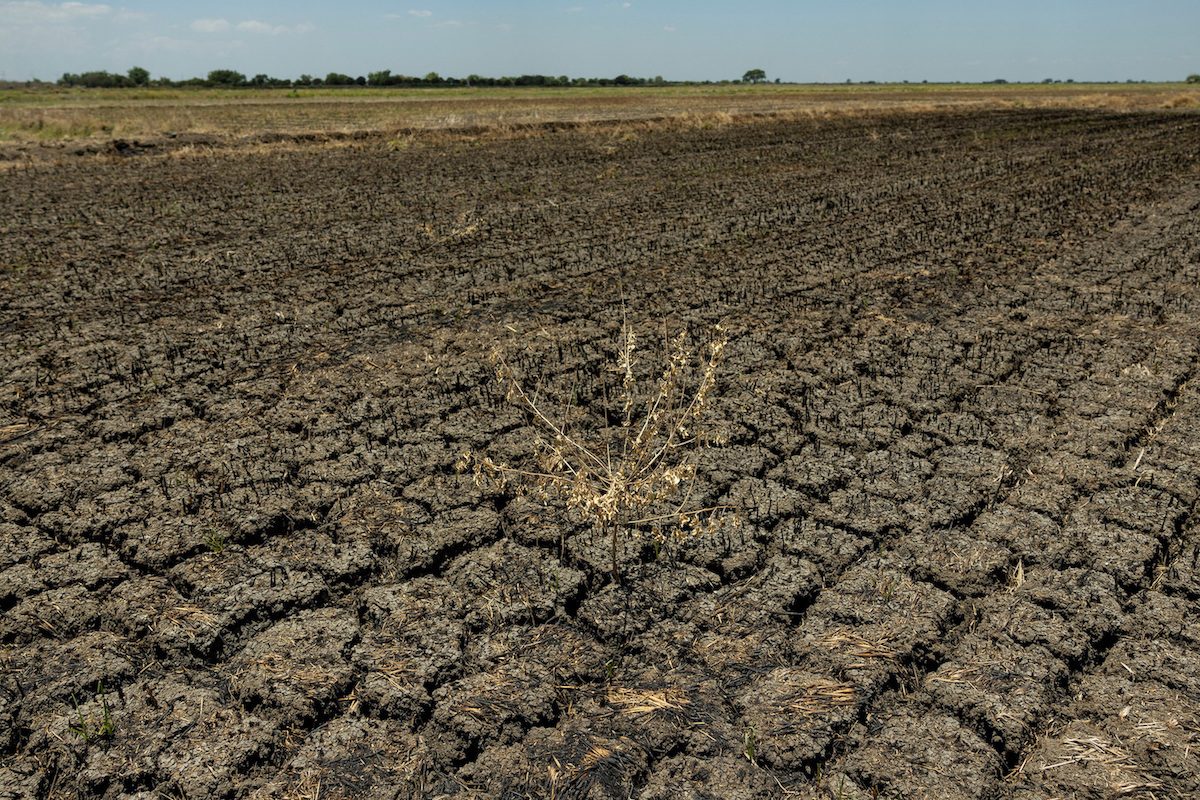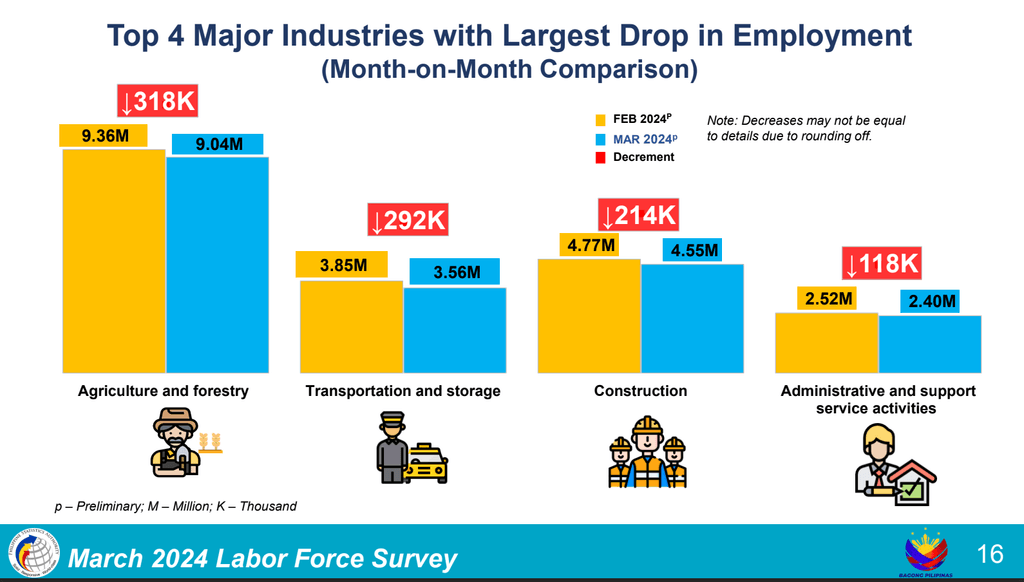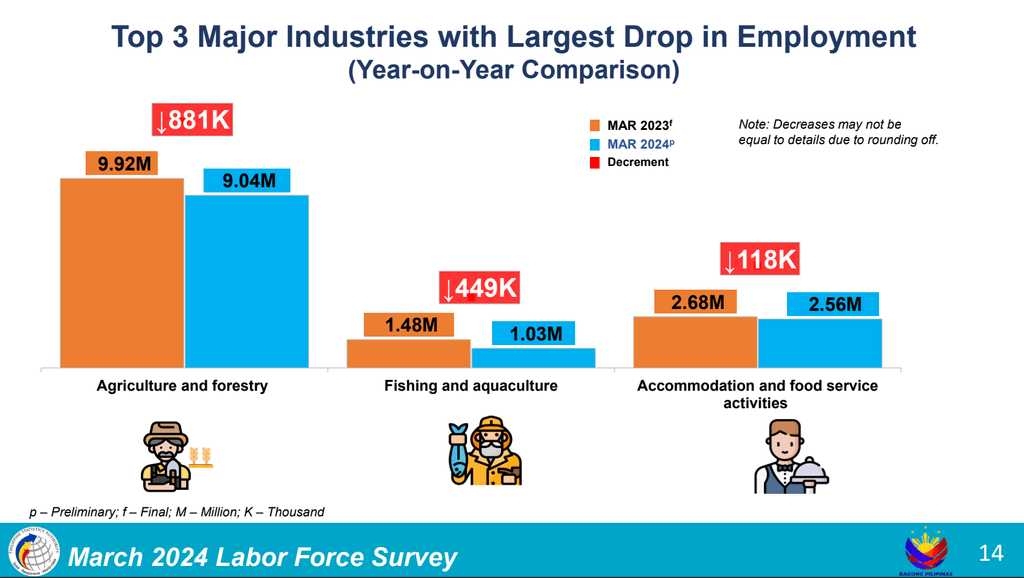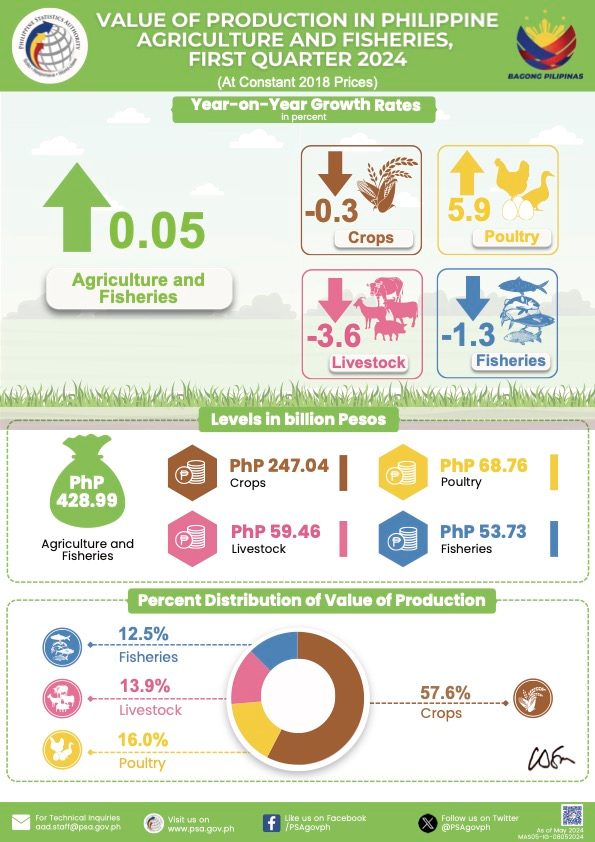SUMMARY
This is AI generated summarization, which may have errors. For context, always refer to the full article.

MANILA, Philippines – Farmers faced a twin dilemma amid scorching El Niño, suffering job losses and a lower crop yield, latest figures from the Philippine Statistics Authority (PSA) showed.
On Wednesday, May 8, the PSA said the unemployment rate in March increased to 3.9% from February’s 3.5%. This is equivalent to 2 million unemployed persons 15 years old and above.
On a year-on-year basis, however, the unemployment rate in March 2024 was lower than the 4.7% recorded in the same month a year ago.
Agriculture and forestry suffered the biggest loss on a month-on-month basis, shedding 318,000 jobs in March compared to February.
Transportation and storage as well as construction, sectors that are also exposed to excessive heat, likewise saw declines during the period, posting drops of 292,000 and 214,000, respectively.

On a year-on-year basis, or comparing March 2023 to March 2024, jobs in agriculture and forestry plunged by 881,000.

Latest production data also registered dips.
Crop production, which was valued at P247 billion, fell by 0.3% in the first quarter of 2024. The value of palay production declined by 2%. Crop production comprises 57.6% of the total value of production in agriculture and fisheries.
The value of fisheries production contracted by 1.3%, valued at P53.7 billion.
“Makikita natin na doon sa crops at sa fisheries, kasama na rin ‘yung sa livestock, particularly hog farming, ay nagkaroon tayo ng pagbawas sa value of production. Nare-reflect doon sa ating value of production…at consistent naman ‘yung datos dito sa employment…. So, yes, they were affected by El Niño,” National Statistician Dennis Mapa said in a briefing on Wednesday.
(We can see that in crops and fisheries, including livestock, particularly in hog farming, we experienced a decrease in value of production. This is reflected in our value of production and the data on employment is consistent here as well. So, yes, they were affected by El Niño.)

Labor market recovery?
In its emailed statement on the latest PSA figures, the National Economic and Development Authority (NEDA) made no mention of the impact of El Niño on jobs, and instead highlighted the gains posted in March.
In March, wholesale and retail trade saw the highest annual increase, employing 963,000 more workers. Manufacturing followed with 553,000 new jobs, while public administration and defense added 229,000 employed individuals.
NEDA also emphasized that the underemployment rate eased to 11% in March 2024, compared to 11.2% in March 2023.
“We will continue to prioritize creating high-quality and well-paying jobs to address the rising issues of vulnerable employment. We will focus on attracting job-generating investments from the private sector and scaling up social and physical infrastructure to improve our people’s employment prospects to achieve this goal,” said NEDA Secretary Arsenio Balisacan.
The Department of Finance also did not mention El Niño’s impact on jobs and chose to highlight the gains in other sectors.
“This clearly demonstrates that the Philippine economy is not just resilient but thriving amid external challenges. More importantly, it tells us that our economic growth is becoming more inclusive as it engages more and more Filipinos to participate in the labor market,” said Finance Secretary Ralph Recto.
Think tank IBON Foundation countered that the government “must be living in an alternate universe” as the “‘improvement’ is not being felt by many Filipinos struggling with poor quality jobs.”
According to the group, the reported year-on-year drop in the number of unemployed and underemployed people may simply be an indication of the growing number of Filipinos who are giving up on their job search due to poor prospects or who are simply becoming discouraged.
Additionally, according to IBON, the significant job losses in agriculture demonstrate how unstable the industry’s employment is because of its “backwardness” and susceptibility to weather events like El Niño.
IBON noted that the number of employed people in the sector decreased dramatically year-on-year in the first quarter of 2024 – by 697,000 in January, 1.32 million in February, and 1.33 million in March. The agriculture industry accounted for 1 million of the 1.7 million part-time workers who were lost.
“[I]t’s bewildering that the Marcos Jr. administration still pushes its hype of ‘encouraging trends’ and ‘improvement’ of the labor market despite rising hunger and extensive poverty,” IBON Foundation said. – Rappler.com
Add a comment
How does this make you feel?

![[In This Economy] El Niño-nomics: How intense heat is drying up the Philippine economy](https://www.rappler.com/tachyon/2024/05/TL-El-nino-nomics-May-3-2024.jpg?fit=449%2C449)














![[OPINION] Unpaid care work by women is a public concern](https://www.rappler.com/tachyon/2024/07/20240725-unpaid-care-work-public-concern.jpg?resize=257%2C257&crop_strategy=attention)




There are no comments yet. Add your comment to start the conversation.